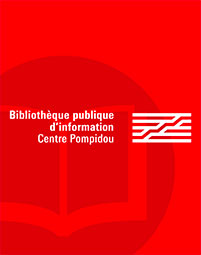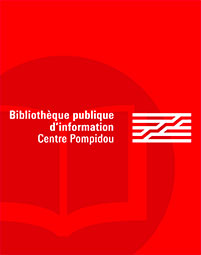Résumé : [UN]Precedented Pyongyang” is an urban research on how Pyongyang, the capital of North Korea, was reconstructed from the Korean War based on the idea of socialist urbanism and how those socialist urban spaces will transform when it adopts the new market-economy system.Despite the notorious fact of it being one of the most veiled countries in modern history, North Korea recently has started to get engaged with the rest of the world, and now we can easily witness various socio-economic changes of the nation which was seen in the 1990s in other post-socialist countries. And as the capital of the nation, Pyongyang has already entered into fast transformation stage with numbers of developments both in public and private sectors since the new regime of Kim Jung Un.However, we sometimes overlook the fact that the city was built based on the goal to be an ideal socialist city. After the three years of Korean War in the 1950s, Pyongyang was completely demolished and had a unique chance to build a new city based on the socialist ideology. Although the current morphology may not be exactly same as the original master plan, many urban spaces and infrastructures remain as evidences of socialist urban planning. And interestingly enough, these are urban elements that have major conflict with the idea of market-oriented economy, and at the moment, the morphology of the city is already changing. Then, the question is, will Pyongyang become one of post-socialist cities, having them as precedents to the city, or will it have its own development path that is unprecedented?
Recherche simple :
- Sujet : Pyongyang (Corée N.)
Documents en rayon : 5
par Chancel, Philippe (1959-....)
Favre
2008 -
-
Disponible - 770 CHAN
Niveau 3 - Arts
Résumé : Photographies du spectacle Arirang en Corée du Nord, qui rassemble plusieurs milliers de gymnastes effectuant de manière coordonnée des figures, souvent complexes, sur un accompagnement musical.
par Bizet, Didier (1964-....)
Pyramyd éditions
2020 -
-
Disponible - 77.4(5) BIZ
Niveau 3 - Arts
Résumé : Une exploration des rues de Pyongyang, à la rencontre de ses habitants. En réponse au contrôle total des autorités nord-coréennes sur ses itinéraires, et donc sur les réalités qui lui sont accessibles, le photographe accompagne ses prises de vue de retouches et de montages pour proposer une réflexion sur la véracité de ce qui est vu. ©Electre 2020
par Bianchi, Cristiano (19..-....) ; Drapić, Kristina (19..-....) ; Koryo Studio
Thames & Hudson
2019 -
-
Disponible - 725.19 BIA
Niveau 3 - Arts
Résumé : "Many "model" cities, both imagined and physical, have existed throughout history; from the ideal cities of the Renaissance, Urbino, Pienza and Ferrara, to modernist utopias, such as Brasilia or Chandigarh. North Korea's Pyongyang, however, is arguably unique. Entirely rebuilt following the Korean War (1950-53), the city was planned and fully implemented to model a single ideological vision - a guide for an entire state. As a result, the urban fabric of Pyongyang displays an extraordinary architectural cohesion and narrative, artfully captured in the pages of this book. In recent years, many of Pyongyang's buildings have been redeveloped to remove interior features or to render facades unrecognizable. From the city's monumental axes to its symbolic sports halls and experimental housing concepts, this timely book offers comprehensive visual access to Pyongyang's restricted buildings, which still preserve the DPRK's original vision for a city designed "for the people". Often kitsch, colourful and dramatic, Pyongyang's architecture can be reminiscent of the aesthetic of a Wes Anderson film, where it is difficult to distinguish between reality and theatre. Reflecting a culture that has carefully crafted its own narrative, the backdrop of each photograph has been replaced with a colour gradient, evoking the idealized pastel skies of the country's propaganda posters"
par Meuser, Philipp (1969-....)
DOM Publishers
2012 -
-
Disponible - 725.3 PYO 1
Niveau 3 - Arts
-
Disponible - 725.3 PYO 2
Niveau 3 - Arts
Résumé : Ambitiously designed community buildings, faceless mass housing developments, and a monumental emptiness are the defining features of Pyongyang - a city of three million inhabitants rising from the rubble to which the Korean War reducedit in the 1950s. This architectural guide to the capital of the Democratic People’s Republic of Korea has two parts comprising a total of 368 pages. While Volume 1 offers a selection of images and information on nearly one hundred buildings in Pyongyang provided by the Pyongyang Foreign Languages Publishing House and presented here without further commentary, Volume 2 sets this material within its architectural and historical context. The Architectural and Cultural Guide Pyongyang offers unprecedented insights into the capital of what is probably the most isolated country in the world, ruled in the third generation by a “first family” stubbornly upholding its own brand of stone-age communism. • 100 buildings and monuments • Cabinet of architectural curiosities • Brief history of North Korean architecture • Theory and practice of urban planning in North Korea • Arirang mass gymnastics events • Propaganda posters

 Les bibliothèques de la ville de Paris
Les bibliothèques de la ville de Paris
 Les bibliothèques universitaires
Les bibliothèques universitaires
 La BnF
La BnF
 L'encyclopédie Wikipédia
L'encyclopédie Wikipédia
 L'Encyclopædia Universalis
L'Encyclopædia Universalis
 La bibliothèque du film
La bibliothèque du film
 La médiathèque de la Philharmonie de Paris
La médiathèque de la Philharmonie de Paris

![[Un] precedented Pyongyang](/imported_images/livre/couverture/978-1-940291-35-2.jpg)






